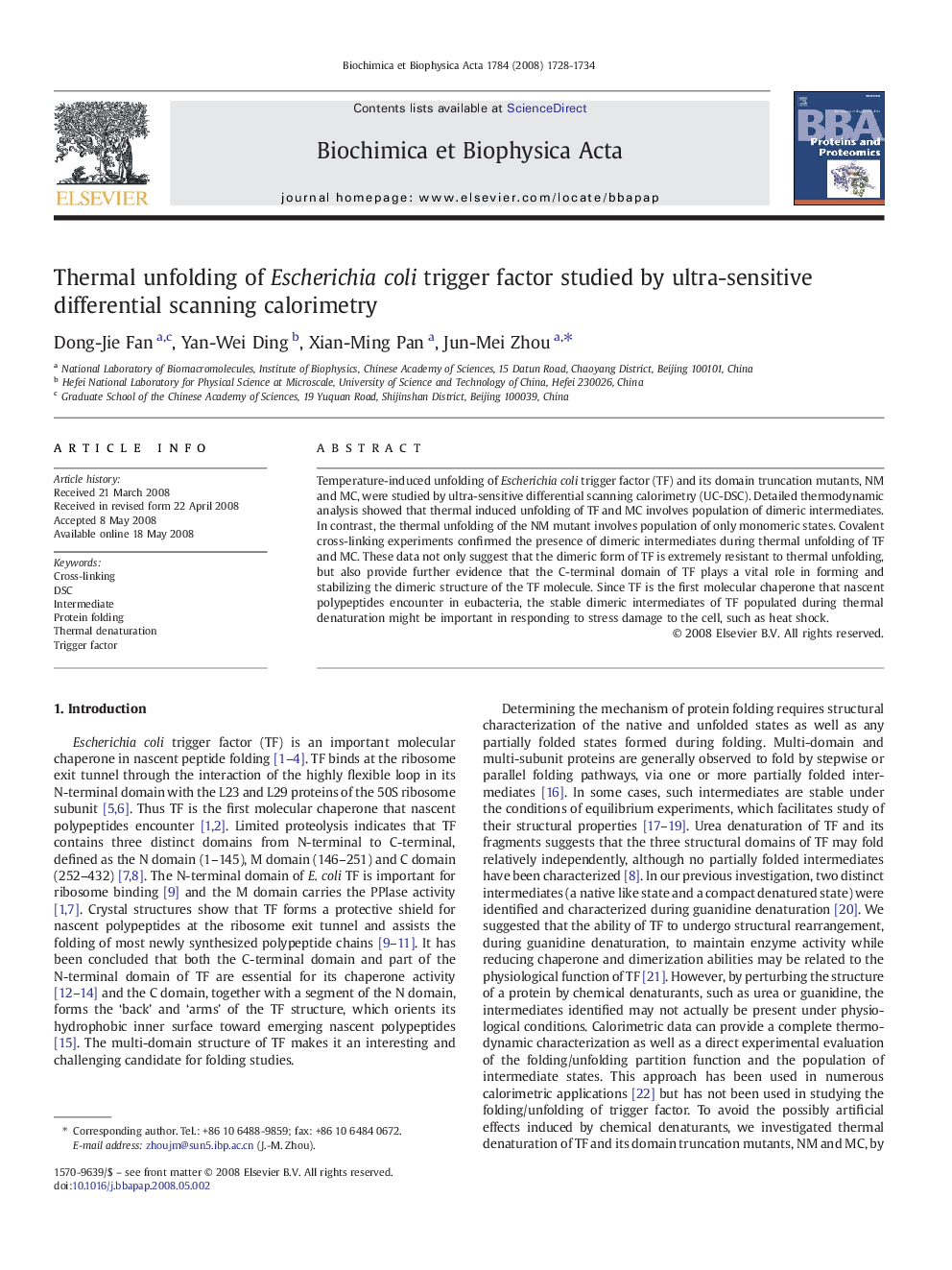| Article ID | Journal | Published Year | Pages | File Type |
|---|---|---|---|---|
| 1180477 | Biochimica et Biophysica Acta (BBA) - Proteins and Proteomics | 2008 | 7 Pages |
Temperature-induced unfolding of Escherichia coli trigger factor (TF) and its domain truncation mutants, NM and MC, were studied by ultra-sensitive differential scanning calorimetry (UC-DSC). Detailed thermodynamic analysis showed that thermal induced unfolding of TF and MC involves population of dimeric intermediates. In contrast, the thermal unfolding of the NM mutant involves population of only monomeric states. Covalent cross-linking experiments confirmed the presence of dimeric intermediates during thermal unfolding of TF and MC. These data not only suggest that the dimeric form of TF is extremely resistant to thermal unfolding, but also provide further evidence that the C-terminal domain of TF plays a vital role in forming and stabilizing the dimeric structure of the TF molecule. Since TF is the first molecular chaperone that nascent polypeptides encounter in eubacteria, the stable dimeric intermediates of TF populated during thermal denaturation might be important in responding to stress damage to the cell, such as heat shock.
